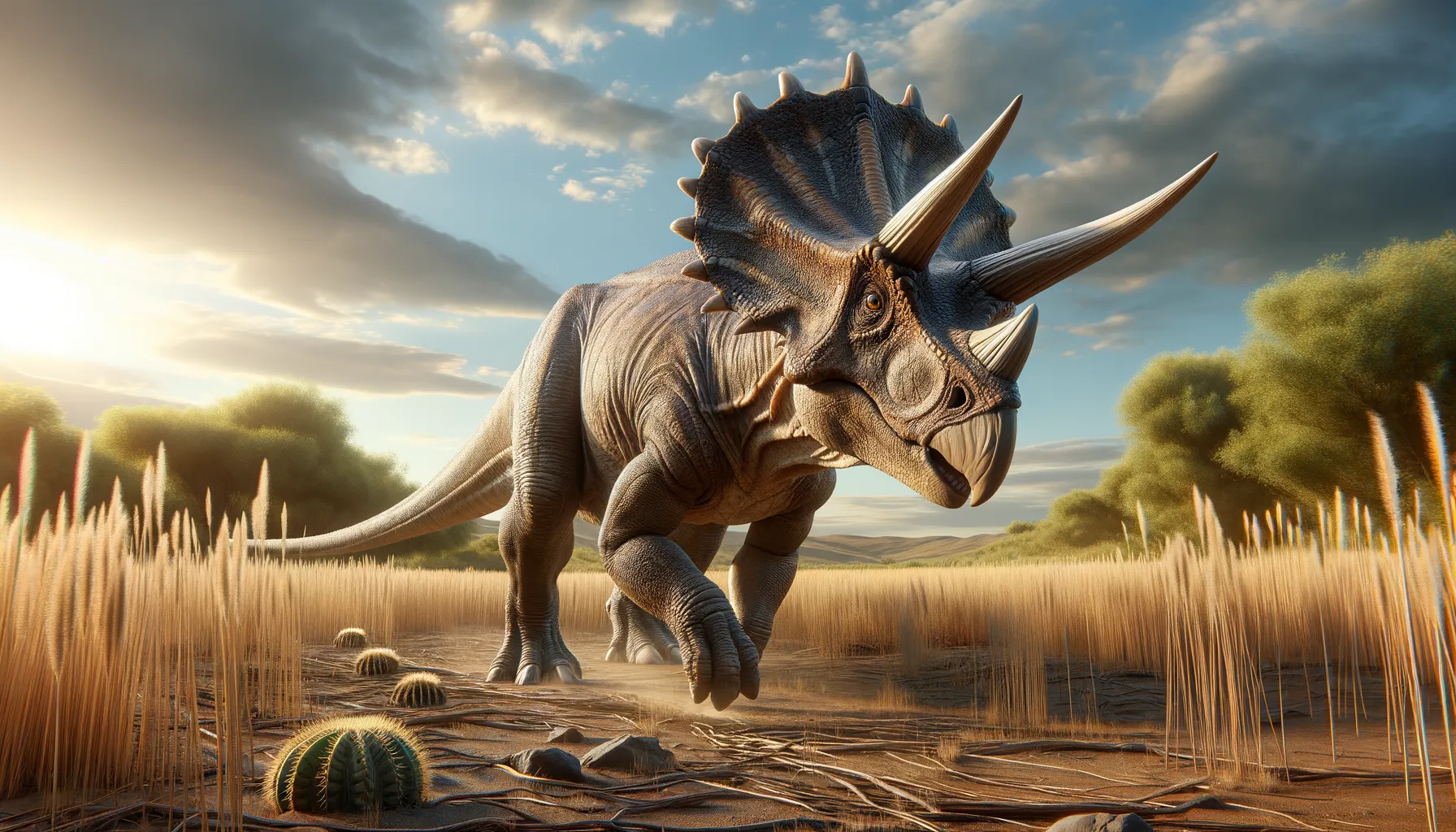
Serendipaceratops
Unveiling the southern horned mystery.
Period
Cretaceous
Length
Up to 6 meters in length.
Height
Around 1 to 2 meters at the shoulder.
Weight
Approximately 1 to 2 tonnes.
Serendipaceratops was a member of the ceratopsian group of dinosaurs, known for their distinctive horned faces. Discovered in Australia, it provided significant insight into the distribution of ceratopsians, previously thought to be exclusive to the northern hemisphere. Its discovery highlighted the possible connections between the continents during the Cretaceous period. With a body well-suited for grazing, this dinosaur likely had protective features like horns or frills to fend off predators.
Diet
Serendipaceratops was herbivorous, feeding primarily on low-lying plants. Its jaws were adapted to grind through tough vegetation, likely including ferns and cycads. This diet helped it sustain its large body size and energy requirements.
Hunting
As a herbivore, Serendipaceratops did not hunt. Instead, it foraged for plant material, using its beak-like mouth to clip vegetation. Its physical build was more suited for defense and grazing rather than pursuing prey.
Environmental challenges
Living in the Cretaceous period, Serendipaceratops faced various challenges such as climate shifts and evolving predators. Its habitat was gradually changing with the breakup of continents, leading to varying ecosystems. Predation from larger carnivorous dinosaurs was a constant threat, requiring effective defense mechanisms. Shifts in available plant life due to climate changes would have also required dietary adaptations.
Speed
Slow-moving due to its size and build.
Lifespan
Estimated around 70 to 80 years.
First discovery
Found in Australia in the late 20th century.
Fun Facts
- Serendipaceratops is known from a single arm bone, making it one of the most mysterious dinosaurs.
- Its name means 'serendipitous horned face,' as it was a surprise discovery in Australia.
- This dinosaur lived during the Early Cretaceous period, roughly 100 million years ago.
- It was initially thought to belong to the ceratopsian group, which includes dinosaurs like Triceratops, but this classification is debated.
- Serendipaceratops is significant because it suggests that horned dinosaurs might have lived in the Southern Hemisphere.
- The bone was found in Victoria, Australia, near the coast, an area that once had lush landscapes ideal for dinosaurs.
- The discovery of Serendipaceratops challenges scientists to rethink dinosaur distribution and migration patterns.
Growth and Development
Serendipaceratops likely grew steadily over its lifespan, with juveniles gradually developing the signature horns and frills. These features might have served not only for defense but also for mating displays. Growth rates were influenced by genetic factors and environmental conditions such as food availability and space.
Habitat
It inhabited lush, vegetated areas indicative of what is known as Gondwana, present-day Australia. This environment provided ample plant food sources crucial for its sustenance. The landscape consisted of wide plains and some forested areas, offering both open space and cover.
Interaction with other species
Serendipaceratops interacted with both prey and predators within its ecosystem. As a herbivore, it likely lived in groups to provide safety in numbers against predatory threats. Its relationships with other herbivorous dinosaurs might have ranged from competition for resources to social interactions.
Natural lifespan
Its lifespan was likely quite long, especially for a dinosaur of its size.
Reproduction
Like other dinosaurs, Serendipaceratops laid eggs, with nests possibly guarded by adults. Egg incubation relied on environmental conditions or specific parental care. Once hatched, young would have been vulnerable to predators and depended on group protection.
Social behaviour
This dinosaur might have lived in herds, providing mutual protection against predators. Herd behavior would facilitate communication, mating, and raising young. Cooperative group dynamics were likely crucial for survival in such a threatening environment.
Fossil locations
Fossils were primarily discovered in Australia, adding to the evidence of ceratopsian dinosaurs outside the northern hemisphere. These finds are crucial for understanding ceratopsian dispersal and evolution. The location of these fossils also sheds light on the ancient land connections between southern continents.
